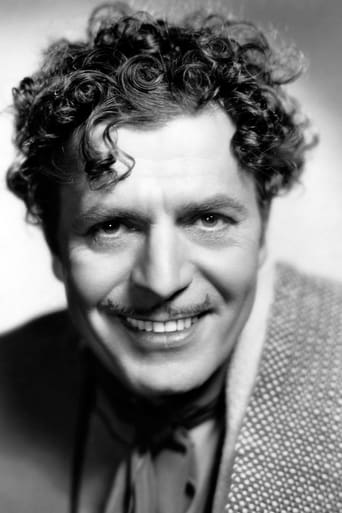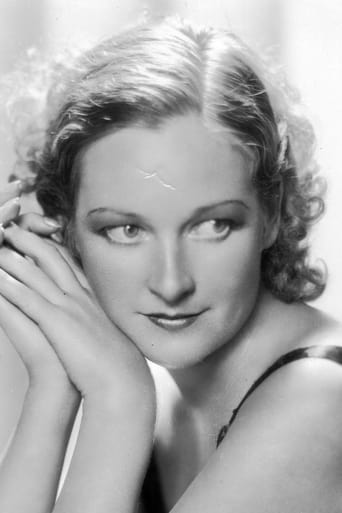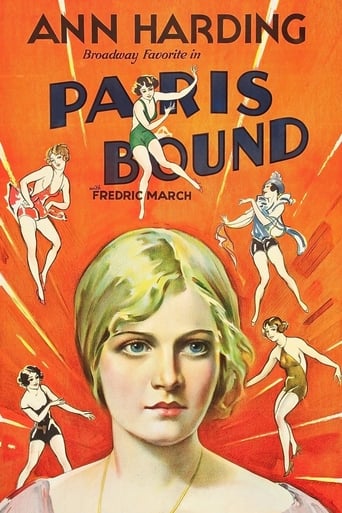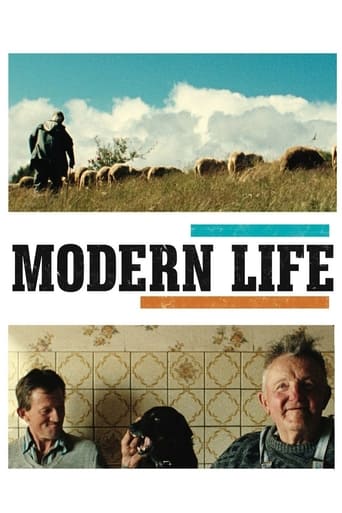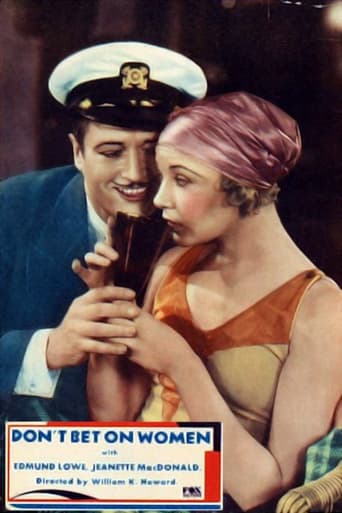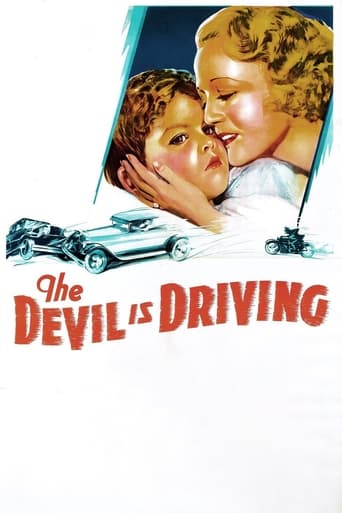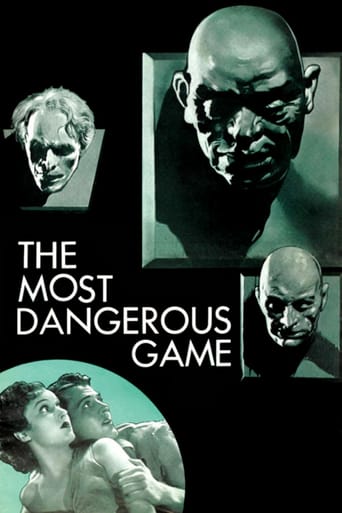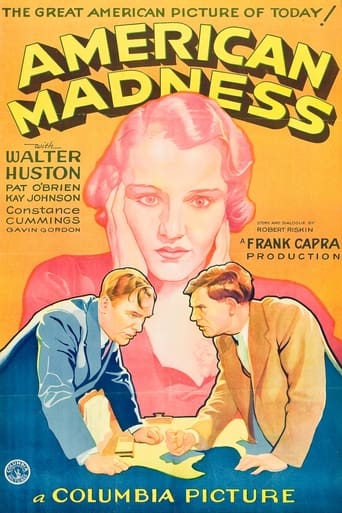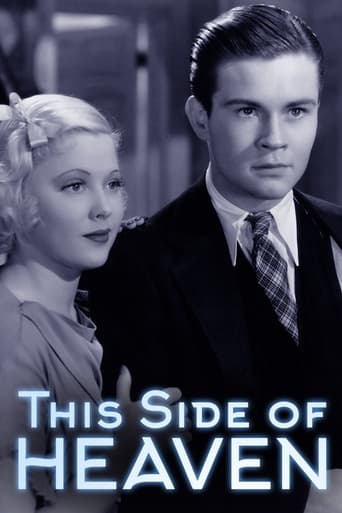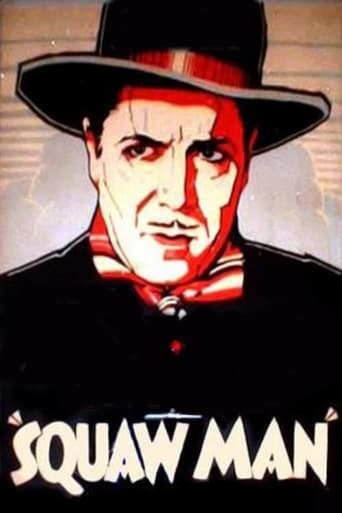

The Squaw Man (1931)
Jim Wyngate, an English aristocrat, comes to the American West under a cloud of suspicion for embezzlement actually committed by his cousin Lord Henry. In Wyoming, Wyngate runs afoul of cattle rustler Cash Hawkins by rescuing the Indian girl Naturich from Hawkins. Wyngate marries Naturich, but then learns that his cousin Lord Henry has been killed and has cleared his name before dying. As Wyngate has long loved Lady Diana, Lord Henry's wife, he is perplexed at his situation. But fate takes a hand and resolves matters as Wyngate could not have predicted.
Watch Trailer
Cast
Similar titles
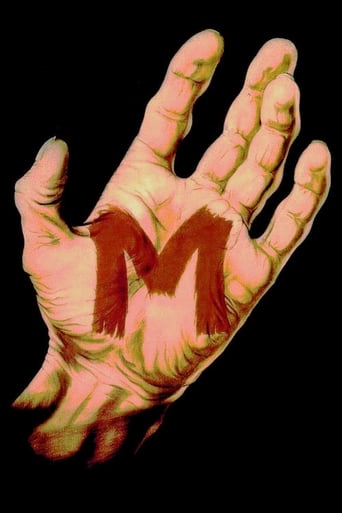
Reviews
good back-story, and good acting
Excellent but underrated film
A lot of perfectly good film show their cards early, establish a unique premise and let the audience explore a topic at a leisurely pace, without much in terms of surprise. this film is not one of those films.
This is a small, humorous movie in some ways, but it has a huge heart. What a nice experience.
The Squaw Man (1931) ** 1/2 (out of 4) This here was Cecil B. DeMille's third attempt at telling Edwin Milton Royle's play. This time out it's Warner Baxter who plays Jim Carston, a British man who is ran out of his country so he heads to the United States and out West. Once there he crosses a rival landowner but things take a turn for the worse when he falls in love with an Indian woman (Lupe Velez), which is a big no-no. This version from DeMille offers up a terrific cast and I think the racial issues are a lot more out front here but I really can't say that this was any sort of improvement over the 1914 version, which I've seen. All but the last reel is lost from the 1918 version so it's impossible to compare all three but this third version features quite a few problems. I think the film's biggest problem is the pacing because at times it moves along at a very slow pace. This includes the early stuff in Britain, which could have been completely left out and I think it would have helped. I also thought some of the stuff in the West dragged during spots but there's no question that the film is still worth viewing for the performances alone. Baxter was extremely good and believable in his part and there's certainly no doubt that he fit the tough guy role just fine. Charles Bickford is excellent as always and we get nice support from Roland Young, Paul Cavanagh and a young Dickie Moore. Velez easily steals the show as she's terrific in each scene she's in. Her beauty is on full display and while I'm sure some might be offended by the way the Indian is played, I thought the performance itself was very good. DeMille delivers a decent picture but at the same time one can't help but wish he had left this alone and attempted something else.
I enjoyed this film far more than I expected--especially since I usually hate DeMille films and the film comes off as very patronizing towards American Indians. Let me explain both of my complaints. First, too often Cecil B. DeMille favored huge spectacular films that featured rather cardboard characters and so for that reason I had little interest in seeing the film. Second, while it's obvious that DeMille is trying to say something positive about respecting and giving equality to our Indian brothers, the film often comes off as paternalistic and racist. It's obvious that DeMille is trying to say something profound about American Indians but it just backfires.The film begins in England and oddly Warner Baxter is cast as an upper-class Brit despite his Columbus, Ohio origins. While he was an amazingly underrated actor and did this role well for an American, it seemed odd that everyone in "Old Blighty" sounded like a local but Baxter. Despite this, I really liked this portion of the film. Baxter has fallen in love with his slimy cousin's wife, but being a decent man he's decided to leave the country because if he stays he knows that a romance between them is inevitable. At about the same time, it turns out that the cousin has embezzled some funds and Baxter tells the cousin to blame this on him! After all, he reasoned, he's leaving the country and won't come back and blaming Baxter will get the cousin out of a jam. While it seemed like a very unlikely plot, the writing and execution of it was so good that I managed to suspend disbelief. And, for once, DeMille seemed to do a decent job with characterizations--at least in this part of the film. There were no huge scenes and the film was very character-driven.Later, after Baxter leaves England, he inexplicably relocates to the most desolate and godforsaken part of the United States. The place is all dirt and cacti and the idea of an English lord living there is stretching things a bit!! However, this also worked thanks to great acting. The conflict between the evil and land-crazy Charles Bickford and Baxter was interesting as was Baxter's coming to a young Indian girl's defense when Bickford is abusing her. I though that Baxter's treating the girl like a human being was a very positive statement and having this Indian fall in love with a White man was a great plot element. After all, Americans (and most others throughout the world) probably would have not approved of this "miscegenation". DeMille allowing them to slowly fall in love and marry was a great stand against racism--too bad the final portion of the film undid a lot of the positive strides such a plot might have made. By the way, the lady was played by Lupe Valez--who doesn't exactly look Indian although all the other Indians in the film are authentic. Plus, her talking and acting like a child through the film made the whole thing seem paternalistic after a while.Out of the blue, the cousin is killed and he admits that it was he and NOT Baxter who embezzled the money. This allowed the cousin's wife to seek out Baxter and renew their love. However, when she realizes that in the seven years that have passed that Baxter has married, this plan cannot be. From this moment on, the film starts to slide downhill...and fast! First, since the cousin is dead, apparently Baxter is the lord of the family estates and they want him to return to England. However, he loves Lupe too much to leave Arizona so he proposes to instead send their cute little son (Dickie Moore) instead!! This made no sense, as you wonder how a man can love his wife yet send away their three year-old son! Why not try moving the family to the UK or perhaps spend part of the time in America and part of the time at the family estate?! Second, and this is a bad example of script writing, although it's been seven years since Lupe murdered Bickford (and it was VERY justified), at the exact same moment the folks from England visit, the sheriff has just obtained new evidence to implicate Valez for murder!! Talk about a convenient coincidence!!! Now, at her death, Baxter would be available to move back to England with his kid and his old flame!! This is just too much coincidence to seem like anything other than sloppy writing. Plus, it seemed to say that Baxter's marrying an Indian was more of an inconvenience than anything else. You would have thought that since the original SQUAW MAN came out in 1914 that DeMille could have done something to fix this plot element.Overall, it's an entertaining film that should have been a very positive statement about interracial love and understanding. Instead, the Indians seemed rather stereotypical and Valez's character seemed amazingly one-dimensional. Oddly, after seven years of marriage, she still talked a bit like Charlie Chan and an American Indian rolled into one! A nice try and this is a film that would be great to remake today--after making the characters more believable.
As all film buffs know Cecil B. DeMille's first version of The Squaw Man was the very first film done in what we now call Hollywood. He did a second silent version and for his third film on his MGM hiatus from Paramount he did it once again.Third time was not the charm. Although the actors, especially Warner Baxter as the disgraced English Earl who goes to the American west and meets, weds, and beds an Indian maiden, Lupe Velez are competent and sincere the film is terribly dated. Depression audiences simply were not interested in a Victorian morality tale with a dose of the British stiff upper lip.It all sounds so quaint and ridiculous. Baxter is accused of embezzlement and he knows who the culprit is, but won't inform because he doesn't want to disgrace the other guy's family. So with admirable rectitude he heads west and make a new life in America.He also manages to make an enemy of Charles Bickford who was another rancher who covets his land. But Baxter finds love with Lupe, as did most of Hollywood in real life, and he has a son who will in fact inherit his title.Cecil B. DeMille was a child of his time. Melodramas like The Squaw Man was the stuff that the legitimate theater did when he grew up and learned his trade from David Belasco. But audiences weren't buying it in 1931, people had real issues about where the next meal was coming from and could they find work. A story about some Victorian honor code just wasn't marketable.It's a sincere film though and it might be worth a look to judge what public tastes were at the turn of the last century and before the Roaring Twenties.
An English aristocrat becomes 'THE SQUAW MAN' after leaving Britain under mysterious circumstances and marrying an Indian maiden in the American West.At the end of the Silent Era, famed director Cecil B. DeMille signed a deal with MGM to produce three pictures over three years. For the first two--DYNAMITE (1929) and MADAM Satan (1930)--he pulled out all the stops to present lavish photoplays of New York high society, with a mine cave-in and a dirigible disaster to liven things up.For his third film at MGM DeMille returned to his favorite story, which he'd already filmed twice before as a silent. For this talkie version he kept the story simple, without special effects or unnecessary melodrama. He also made outstanding use of filming on location in Arizona. The result is a well-made film with a poignant storyline and an emotionally gripping conclusion.While Warner Baxter's American accent makes him rather unbelievable as an Englishman, this can be easily overlooked because of his fine performance. Steadfast & strong, he makes a sturdy hero. But acting honors go to Lupe Velez, who strips away all unnecessary technique & mannerisms to deliver an uncomplicated, heartbreaking portrayal of a primitive woman wholly devoted to the man she adores and their son. Without even trying, she completely dominates the film.The rest of the cast also make their mark in much smaller roles: beautiful Eleanor Boardman as the titled Englishwoman Baxter loves; owlish Roland Young as Baxter's best friend; shifty Paul Cavanagh as the feckless Earl of Kerhill; and Julia Faye as a fox hunting American widow.Out West, the cast includes angry Charles Bickford as a murderous rancher intent on grabbing Buzzards Pass from Baxter; bullying DeWitt Jennings as the corrupt sheriff of Maverick; J. Farrell MacDonald as Baxter's loyal ranch hand; and little Dickie Moore, one of the OUR GANG kids, as the lively son of Baxter & Velez. Wizened old Luke Cosgrave gives a few humorous moments as the cantankerous driver of a desert jalopy.DeMille's sojourn at MGM was not a commercial success for the Studio. His contract wasn't extended and he returned to Paramount, where he would soon commence on some of the most popular films of his career.
